The history of open world games

Open-world video games give us a promise that is impossible to fulfill. They offer us to plunge into a convincing and interesting world of freedom, but limited, due to inherent playful conventions, by the small set of actions available. In such games, our capabilities are much poorer than in the real world. But they still can not bother us.
Despite all the obvious setbacks and limitations, we plunge into the open worlds for more than 30 years. Today, the plot of almost every large-scale game takes place in an open world. We enjoy their opportunities and forgive them for their oddities.
')
By the way, these oddities are not just the consequences of the limitations of modern technology. The features of modern open world games are rooted in the games of the past. And we are not talking about the early Grand Theft Auto , and not even about the first GTA , built on the foundation laid before it by the decade of games in the open world.
From the spirit of graphic adventure games , simulators , first-person shooters , city-planning simulators and racing on maps of the past, we moved to a vast open world. This common archetype is seen in games from conditionally graphic Adventure and Elite to over-detailed Grand Theft Auto V and Elite Dangerous .
Before we begin, let's deal with the definitions: the design of open world games has its own spectrum. Many games have its aspects, for example, in Chrono Trigger (moving in time) or in restarting Tomb Raider (the ability to return to previous areas and research them). But in order to truly consider a game an open world game, freedom must be present in it. The player should have a feeling that, taking into account the rules of the game world, he can do everything at any time, freely moving in space. Games with a true open world should give the player the ability to decide when to perform actions. That is, the player has the freedom to perform actions that do not lead to the next chapter of the plot. The definition is rather vague, but one should not be afraid of borderline cases. First of all, we want to highlight those games that have become important for the evolution of the genre as a whole.
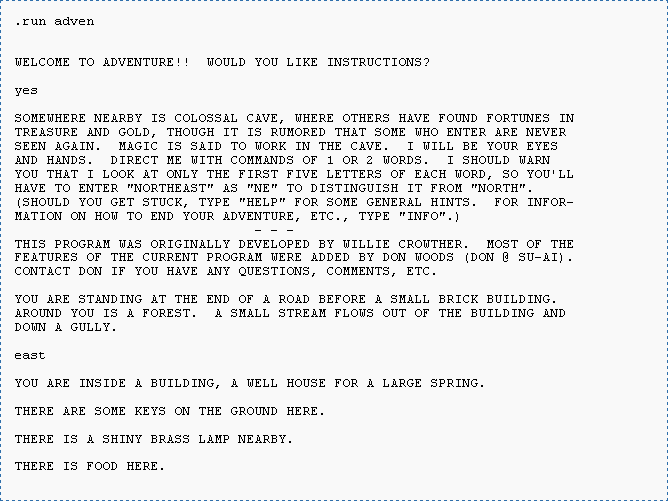
Colossal Cave Adventure in all its text beauty
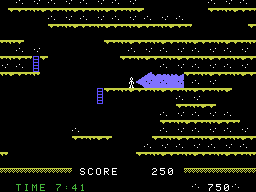
Mountain King for Colecovision

Ultima VI, is she familiar to anyone?

In the original Ultima there were no levels or “portals” that limited the search for a time machine that would allow you to move a thousand years ago to kill an evil sorcerer. Ultima VI (1990) is still magical.
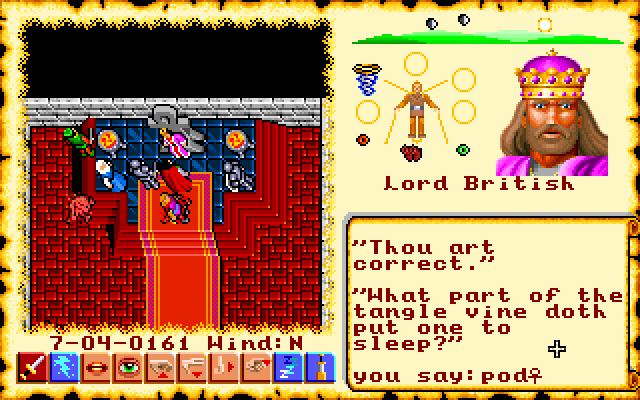
Such dialogues are no longer written.
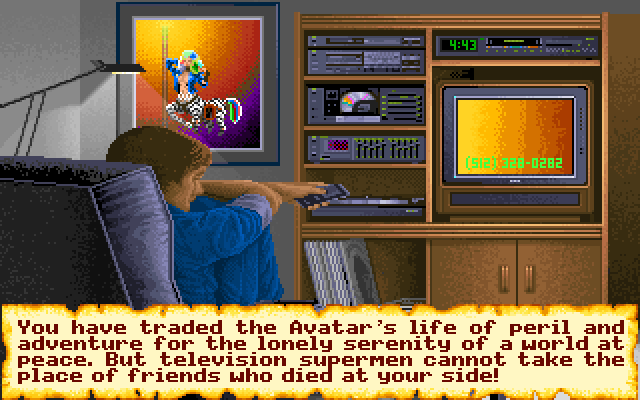
Severely, Ultima VI. Very harsh.

The game was pretty scary at the time.

Commodore 64's graphics were pretty impressive for Ant Attack times.

Saving even one life was a feat. Don't let the results screen fool you
Grandparents
Surprisingly, the foundations of open world games were laid on mainframes, the 1976 text game Colossal Cave Adventure for the PDP-10. The core of Adventure , in essence, was not too different from the core of modern GTA , Elite and Minecraft : the player could explore the world freely and in all directions. His only goal was to find the treasure (which was scattered around the cave) and escape, saving his life.
Colossal Cave Adventure became a direct source of inspiration for the 1980 Adventure game on the Atari 2600. Its open world could seem deserted and populated only by ucodracons and simple geometric figures, but the relative vastness allowed the players to create amazing adventures in their imagination. The RPG Ultima series for home computers was able to convey the freedom (and even dynamism) of the live game in Dungeons & Dragons . Even in the first part of the game (1981), there were no levels or “portals” that interfered with free wandering around villages, cities, dungeons, and wastelands. The player went in search of a time machine that would allow him to move a thousand years ago and kill an evil sorcerer. Later, in Ultima VI (1990), the whole world was brought to a single scale. Previously, cities and other places were just icons on the world map. Stepping on these badges, the player moved to the city. In Ultima VI, the player was moving directly through the settlements themselves.
Probably, free movement first began in games of another genre with Ant Attack (1983), a scary game for the ZX Spectrum and Commodore 64, in which you save your partner and run away from huge killer ants surrounded by architecture that resembles Escher’s paintings.
In the same year, CBS Electronics Mountain King's platformer gave players the opportunity to move freely through (relatively) tremendous mountain. The goal was to perform three tasks: collect 1000 diamonds, get a gold crown (for this you first need to find the spirit of fire) and return to the top of the mountain, not burnt and not dying from the attacks of many bats (and not getting into the cocoon of a huge green spider living down below).
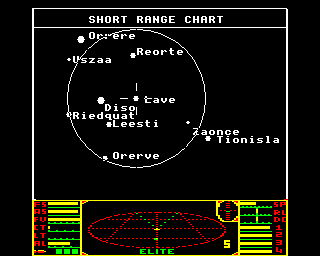
Elite - a game that changed everything (including the life of Lee Hutchinson)

At that time, creating a game about flying in space was not an easy task.

The Adventures of Robin Hood

Maybe Metroid wasn’t an open-world game, but it definitely had similar DNA

Mercenary
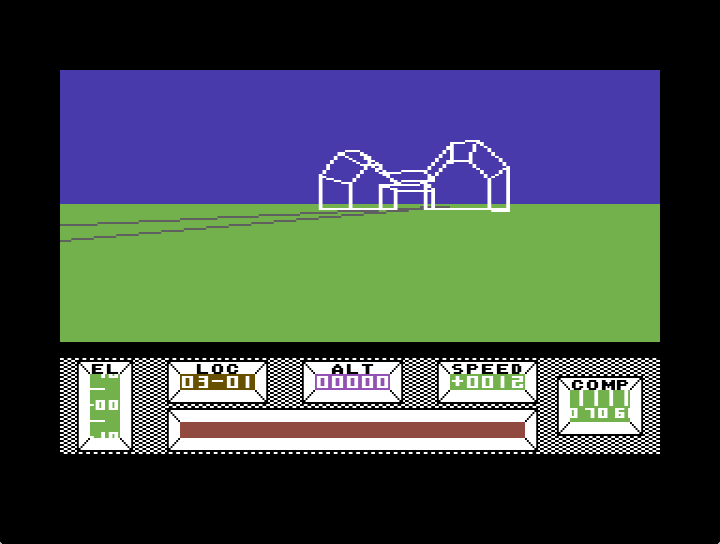
Despite its name (“Mercenary”), this game is not about shooting. Rather, the player will go to explore new planets.
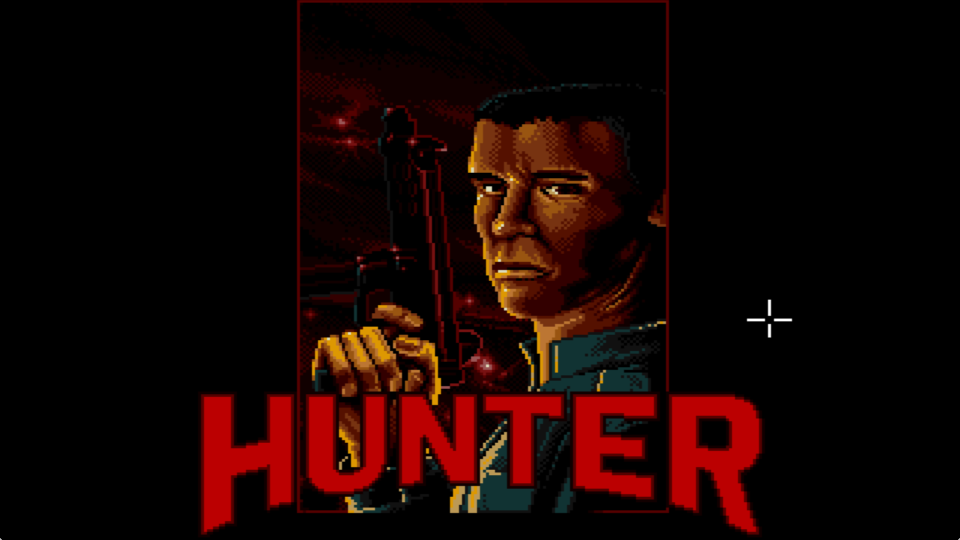
Hunter
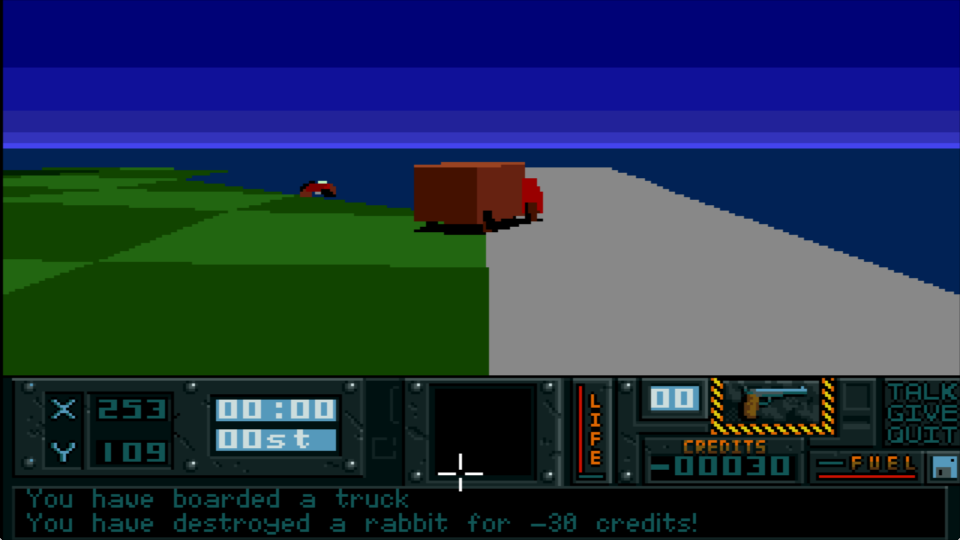
Probably the most obvious predecessor of the GTA. In Hunter there were a lot of vehicles (cars, trucks, motorcycles, boats, tanks, helicopters, etc.), in which you could climb and ride around.

In Hunter it was possible to enter and exit buildings, weapons were used. It was possible to bribe and interrogate civilians and soldiers, kill or catch animals, swim. For that time it was a very open world.
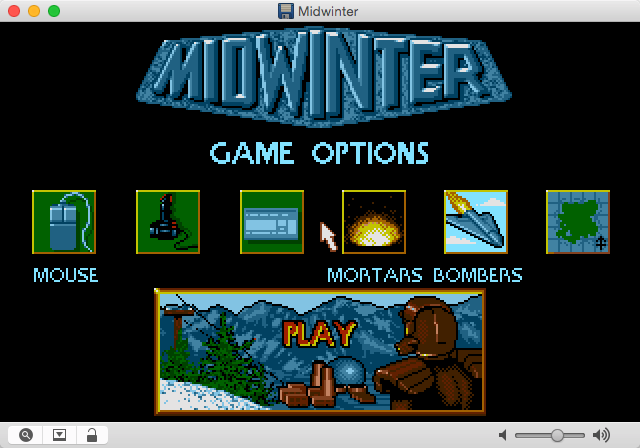
Midwinter

This game has shown that open worlds are not only suitable for driving or destruction

In addition, in Midwinter was this convenient interface points
Don't lock us up
What we now know as the open-world gameplay took on more definite forms in the same year on the BBC Micro computer and its cheaper counterpart Acorn Electron (and a little later on almost all other systems). Elite has changed everything. This game should have been installed on every gaming computer in the mid-1980s. Unlimited space flight over eight galaxies with 256 planets, the structure of which was constant, and the location was generated on the fly using an algorithm to save disk space. Abstract 3D-frame models of planets and spacecraft created enough detail to provide a sense of scale, the rest was drawn by the imagination. Because of this, the game provided many opportunities.
It was possible to trade various resources. Some of them were standard and legal, some - smuggling and rare. You could go deep into the vast void of space in search of the legendary artifacts that your friends and classmates told you about. A player could be a pirate, a bounty hunter, a government agent, an asteroid miner, a trader, or a bit of everything. The game had a race of hostile insectoids, upgrades, fuel reserves, galaxies under investigation, and a combat rating. (This rating was declared the main goal of the game, but most players had their own tasks.)
However, Elite was not the only important open world of that era. Mercenary: Escape from Targ (1985) for the Atari and Commodore 64 eight-bit systems has earned almost the same fame as a source of inspiration for future worlds.
Today, open worlds without shooting or fighting do not get much popularity. But the creators of Mercenary , it seems, were not very interested in such forms of violence. The player, of course, could shoot. But no one forced him. It was impossible to die. If a player's ship was hit, he made an emergency landing. The main goal was research.
Most of the world (war-torn planet) was empty, but a building could be found at almost every grid point. These buildings could be blown up to recognize their names, or enter them (on foot) to explore inside. In the game there was a large proportion of humor: the fastest ship was a piece of cheese, the kitchen sink made it possible to lift any object, and the cobweb opened any door.
Mercenary surprisingly violated all stereotypes. It did not have a system of points, mandatory missions, murders (well, or almost was not), it was not necessary to collect items. If a player wanted to escape from the world of Targ, he could freely choose either side in the war (it’s best to be a real mercenary: work for the local Palyars and the invading Mechanoids).
The game Mike Singleton (Mike Singleton) Midwinter (1989) outlined the future of open worlds. In it, the player controlled several characters: he starts with the commander of the local militia, trying to gather an army, then manages about 32 recruits (each has two hours of playing time), trying to repel the attack in a post-apocalypse on a huge island (about 410 thousand square kilometers) covered with snow. You can also completely ignore the strategic component and find a way to destroy the enemy base alone.
Although Hunter (1991) was not very well known in North America, she became one of the most serious contenders for the title of GTA predecessor. Its world was inferior to GTA in scale, but not in variability. The game had several types of vehicles (cars, trucks, motorcycles, tanks, helicopters, etc.), buildings that could be entered, weapons, money, killing bonuses, and an accelerated 24-hour day cycle. It was possible to bribe and interrogate civilians and soldiers, kill or catch animals, swim, kill an enemy general, and invent any other activities for themselves. The game had an unheard of level of freedom at that time, and even today you can get pleasure from it by traveling around the three-dimensional polygonal archipelago of Hunter with flat shading and hills.
Also a little-known The Adventures of Robin Hood (1991) abandoned missions in favor of a big goal - to turn Robin from a villain into a hero. In the real world, people do not appear out of nowhere and go nowhere as soon as you turn away from them. Everyone has their own affairs and tasks. In Robin Hood created the same system - the world is filled with living creatures, and not dolls or mirages. Characters (including Robin himself) continue to pursue their lives without a player.
Much better known in America, although the Nintendo's action-RPG, The Legend of Zelda (1986), which is not so obviously associated with modern open worlds, allows the player to perform tasks in a random order and freely explore the terrestrial world, except for a few plot turns, for which need to find certain items. Another Nintendo Metroid game (1986) was one of the first examples of adding an open world design to the core of the gameplay traditionally used in a linear, hard-coded gameplay. The creators of Metroid took Super Mario Bros and completely got rid of most of its basic concepts. The game has become an action-platformer without levels and points, in which you can not only go in any direction, but also have to do it, explore and study, always be ready for a sudden change in the model of the game world.
Sid Meier's Pirates! (1987) is not much like the ancestor of modern open world games, but it has become an important stage of development. It was a semi-historical marine (ie, based on history, but not sticking to it) "sandbox", in which the player led the young pirate and his team to fame, wealth and dishonor.
In this world, the player was a petty pawn, powerful and rich only relatively. He was constantly dependent on the mercy of the powerful winds of history. The protagonist is a privateer, unprotected from the ever-changing interests of large empires. He can rob individual ships while the local governor favors him, but he always risks his head, because the authorities can change their attitude.
Role for wagering
It is impossible to grasp the immense, so I will not consider in detail the open world RPG (remember Morrowind , Skyrim , Fallout 4 ), but they began to form a separate genre - a close combination of traditional RPG and open worlds. Noteworthy games from the 1980s: Alternate Reality: The City (1985), which threw the player into a huge city, leaving him to take care of himself (not such an easy task, given that the wanderer in a new place needs to eat, drink, earn money, stay happy and avoid death); Wasteland (1987) made it possible to freely wander around the post-apocalyptic world and in any way defeat hostile artificial intelligence; Dragon Quest (1986) did not limit the player in any way, giving him the opportunity to avoid monsters and grow in skills after he left the initial castle.

Turbo esprit
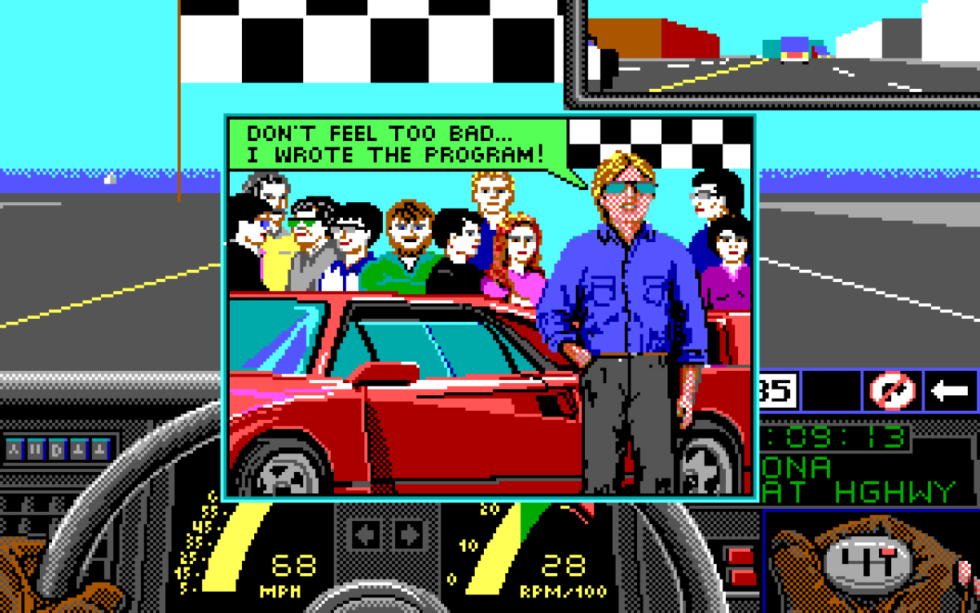
Vette

Garage screen showing all the features of the car

Machine selection

Various cards
Want to ride with me?
The popularity of Burnout Paradise and Forza Horizon (more on them later) owe much to Vette (1989) and Turbo Esprit (1986). Turbo Esprit gave players the choice between the British cities of Wellington, Minster, Gainsborough and Romford. The goal of the game was to capture drug carriers. The player had to decipher their routes, and then stop their cars before they disappear. In Vette, the player got into the virtual model of the real streets of San Francisco with its steep climbs and famous buildings.
Unlike the Turbo Esprit gameplay, Vette 's gameplay involved simple one-on-one races. However, both of these games destroyed traditions, because they could go anywhere. If desired, the player could simply enjoy the views of low-poly 3D-cities with flat shading. (In fact, in Vette there was even a special tour mode: he introduced the player to the main sights and interesting facts.)
These games have a map and street nameplates, so it was impossible to get lost. It is noteworthy that in both games there were pedestrians (who could be crushed) and complicated rules of the road: various speed limits, one-way streets, traffic lights, signs prohibiting turns. They allowed to create approximate models of these cities. The genius was that none of these games told the player how to play: they were a sandbox in which you could play - create your own goals, and not complete the missions of the game. Or you could just drive at a speed of 150 miles per hour.

I think that many games will already be familiar with this part of the article ...

Super Mario 64
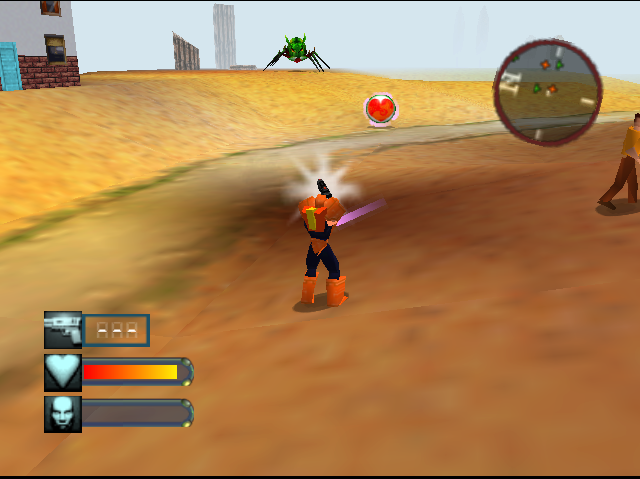
Body harvest

In the open world you can walk along any bridge (sometimes with small obstacles)

First GTA

Supplemented by destruction and chaos, which you probably are more familiar with the new games of the series
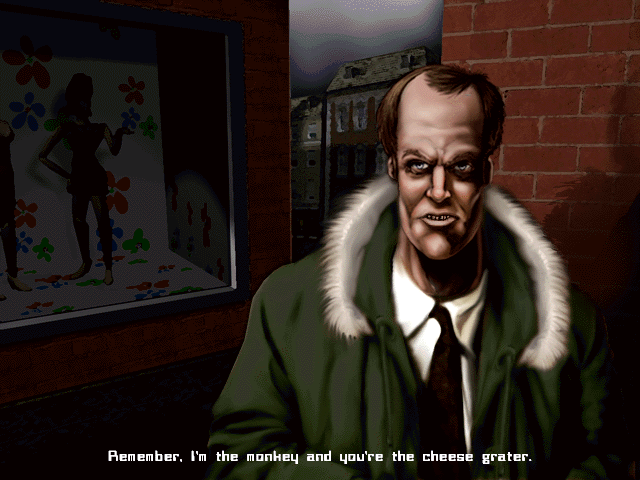
This phrase is not to forget

Even in those days, GTA had additions with mission kits.
It's me mario
In creating the open worlds, Nintendo has built on its Metroid and Zelda games . In 1996, the Super Mario 64 game was released for Nintendo 64. From the very beginning, Mario could run, jump and slide anywhere in the world. 3D camera games are still considered one of the best examples of player assistance. She seldom interfered: rather, the camera rotated smoothly, introducing the player to the world and showing not only where he was going, but also where he should or could go. The user could freely control the camera regardless of Mario's movements.
Mario 64 has set a new quality bar for character movements in 3D worlds and for level design with free movement. Secrets and collectibles distributed around the world to reward the player for curiosity soon began to borrow other games. Banjo Kazooie , Donkey Kong 64 , Conker's Bad Fur Day , Spyro the Dragon and other 3D platformers with free movement were like homage to the genius of Mario 64 . The influence of the game is not over.
The release of Mario 64 was a big event for the small company DMA Design, best known for working on the Lemmings series. DMA Design tried its hand at designing a three-dimensional open world with Body Harvest for Nintendo 64 (1998), one of the few violent games released on this platform. The gameplay was similar to Hunter , but the marauding carnivorous aliens didn’t like Nintendo very much. The family-oriented company adhered to puzzles and did not like bloodshed. Therefore, Body Harvest was excluded from the line of games released simultaneously with the N64.
In parallel with the development of Body Harvest, DMA worked on a top-down game for PC and PS1 about a petty criminal aiming for wealth and fame in the entourage of three parodies of real cities (Liberty City - New York, Vice City - Miami, San Andreas - California) . Grand Theft Auto (1997) was similar to Elite in the city, without the option of playing the "good guy."
The name did not deceive, the player really could hijack any favorite car. And there were a lot of them, of different size, color and power. It was also possible to sell them, interrupt numbers and repaint the body, use cars in crimes ... for example, crush people. The police reacted to this in increasing order: one star - nothing serious, just the pursuit of one police car. Upon reaching the maximum rating of four stars, the police took out body armor and machine guns, set up barricades, and tried to kill the player in all possible ways. It was possible to find different types of weapons and get paid for the killings.
The player’s death did not mean the end of the game: it meant that the player was “wasted” - he was losing all his equipment and starting anew near the hospital.(The arrest (“busted”) led to the same consequences, but the player resumed playing near the police station.) If the player wanted a real storyline, he could participate in tasks (usually related to drugs or murders) received in telephone booths scattered around the cities .
For the game came a set of missions London 1969 and a sequel (1999), the plot of which unfolded in the fictional United States. In the sequel, there appeared side missions (driving taxis, buses, trucks) and gang wars (prototypes of all seven gangs were taken in the real world), but the general scheme and top view are preserved. The game sold well and received good reviews, but the scale of GTA still remained too small. To go to the big leagues, it had to become three-dimensional.

Urban chaos

Shenmue Sega

2000- «»

Driver 2

« », : 1978 «»
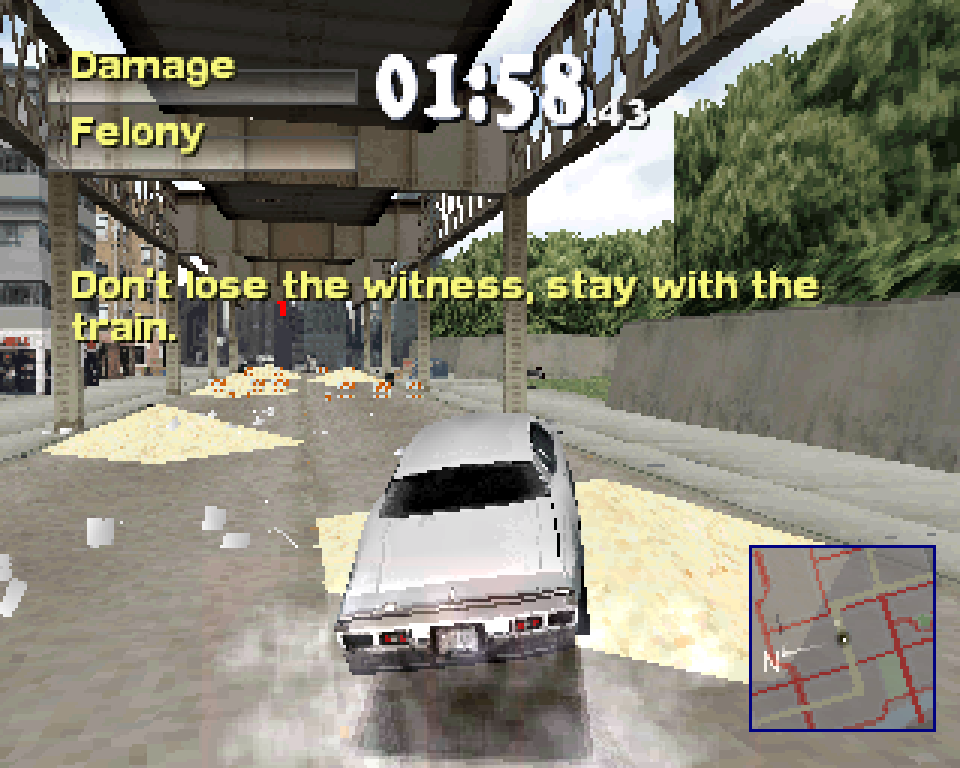
, ,
Already there were open-world 3D games that exploit the dark side of urban life. In Urban Chaos (1999), the player takes the side of law and order (in the form of a cool black policeman), fighting the wave of street violence of the end of the millennium. The game was impressive, although it was a rather small city, people could be stopped and chatted with them, weather and day and night changes were present. You could fight enemies with weapons, hand-to-hand or in vehicles. But despite the brilliant ideas, the execution became imperfect - the artificially inserted elements of the platformer, battles, too long missions and a weak plot did not meet the standards of the modern design of the world.
In the driver(1999) was a less free, but better accomplished approach to combating crime in the open world. Her background resembled a 1970s car chase movie — an exciting and harsh crime drama filled with swagger, violence and deadly dangers. In the game, 3D details of four large cities — Miami, San Francisco, Los Angeles, and New York — are reproduced in some detail (albeit inaccurately). The player could freely navigate through them, choosing their own routes for high-speed chases and shoots. You could even mount recordings of trips, creating your own short film. The game sold well, but its shortcomings quickly emerged (especially the stupidity of the cops, the difficulty level curve and the damn parking mission).
But the game was still outstanding. Driverbecame a successful combination of a simulator and an arcade race, she took the first steps towards an open world design: mostly linear in narrative and mission structure, but showing some flexibility. Noteworthy is also the innovative route guidance system in missions. In most open world games, the player was either directed from street to street, or left alone to deal with routes and marks on the map. In the Driver, a cone appeared on the minimap, showing the target point. The corners of the edges of the cone depended on the distance to the target. With a large distance, the edges of the cone widened, reporting a rich choice of paths. The closer to the goal, the Already became a cone, gradually turning into a straight line. It was a minor detail, but she encouraged the player to experiment.
In the sequelDriver 2 , released about a year later, the core of the open world has become more polished. Passage of the missions remained almost linear, but now the main character (Tanner) could get out of the car and wander through the vast urban spaces (in Chicago, Havana, Las Vegas and Rio de Janeiro). The cities were filled with the most vigilant pedestrians in the entire history - they could go in any direction and unmistakably jump off the player’s cars from the road. However, the game was still too complicated, and it was slightly spoiled by the excessive ambitions of the developers.
These ambitions must be judged in the context of the situation. By the end of the 1990s, Sony had successfully climbed to the top of the popularity of consoles thanks to a deliberate focus on a more mature audience. Game DriverShe tried to convey the same feelings as a mixture of intense thriller with the author's cinema, as the source of her inspiration: the 1978 film The Driver . And she was able to achieve this, because the games became more serious. The ambitions of the games were close to the ambitions of Hollywood.
Nowhere was this more obvious than in a contemporary Driver - the game Shenmue (2000). This is another crime drama in the open world, but completely different in execution. In the driver of free movement space used for escapes and persecution; game Shenmuean open world was needed to immerse the player in the life of Japan in the late 1980s. The player got used to the role of Ryo (Ryo) - a teenager, in whose eyes the Chinese criminal killed his father because he did not want to give up the mirror of the Dragon (which turned out to be one of the two mirrors of the Dragon).
Having set himself the task of avenging the death of his father, Ryo can spend his time playing classic Sega games in the local arcade hall, practicing battle skills in the nearest park, talking to the girl and kitten she is nursing. Or talk to all the characters, methodically looking for evidence to recreate the events of the day of the murder. Ryo can get a job on the loader in the docks (obviously, after he dropped out of school), after which the player will be able to drive on the loader and transport boxes.
Shenmuecould be extremely monotonous, but her commitment to the idea of finding a player in the world found many fans. It was annoying every time to make long runs or ride a bus. It was annoying that you could make good progress in the investigation, but it was too late, the shops were closed, and Ryo had to go home because his guardian Eine-san could start to get worried. But such is life. Shenmue was not afraid to appear unattractive, she conveyed a measured flow of real life. The combination of opportunity and responsibility — Ryo needed to earn money and be respectful of his elders, but he was the master of his fate — made Shenmue the most realistic open world.

GTA II was not very different from the first part ...
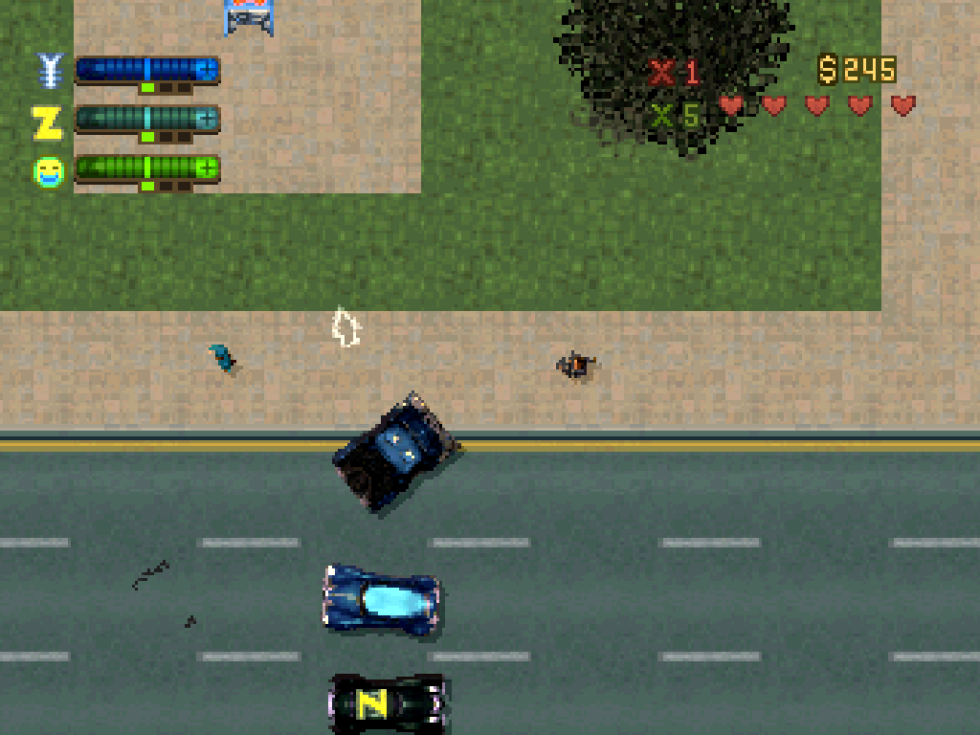
... see?

GTA III Rockstar


GTA San Andreas ...


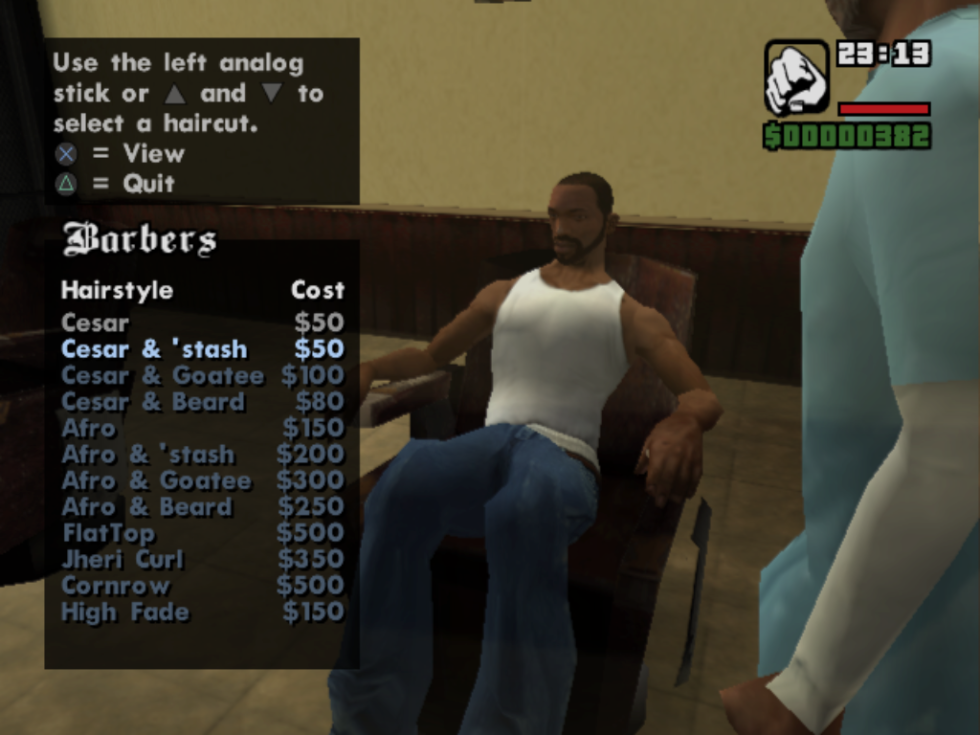
( )

Bully Rockstar

Ammu-Nation
[Ammu-Nation (Ammu-Nation) is a large chain of weapons stores that appears in many parts of the GTA.]
In GTA III (2001), DMA, renamed Rockstar North, began to embody its own open world vision. In a fully three-dimensional environment, the player could enter buildings and see the world from ground level. He could take part in scenes worthy of the movie “The Godfather” : gang brutality, softened by the sounds of the opera of one of the many gaming radio stations. The set of actions in the game was rather limited: shooting, driving a car, running, jumping, hitting. But GTA III never felt primitive. She gave freedom. People on the streets reacted to the player, spoke to him, chased or fled. The user felt like a real cool gangster from a copy of New York. He could not do anything, but he was given a huge sandbox filled with interesting objects - people, cars, ramps, trains, police, ambulances, taxis, weapons, gangsters, funny radio stations parodying real, gun shops and many others.
Followers of the game - Vice City (2002) and San Andreas (2004) expanded the world even further. Now the player had to eat to maintain the health of the character. If you overeat, it can turn into a fat bumpkin. In San Andreas, you could even build muscle. My CJ was an intimidating type, wearing a dark gray hooded sweatshirt, baggy jeans and black glasses. He had the addition of a heavyweight boxer able to resist Muhammad Ali in his best years. The character has become so not "swinging" in the gym, and breaking the passing cars and riding around the BMX. My brother's CJ was a skinny weakling in a bright green T-shirt, tired of even a short run. The character of my cousin was a fat man - the result of the irrepressible eating of fast food.
In San Andreas, we first saw a lot of icons on the map. Most of the time you could choose one of three or four story missions: go on a date, join gang wars, assemble your own team, draw graffiti, search for oysters and horseshoes, go to the gym, run into one of dozens of cafes, hairdressers, clothing stores and weapons, car dealerships or go to a strip club. And this is not counting missions with rescue vehicles, endless skate parks, as well as other entertainment and entertainment in this vast world consisting of three cities, several villages and a secret military base (in which a rocket pack was hidden).
As in the case of Mario 64 , the financial success and popularity of the GTA III series influenced the design of new games. The phrase “Make the game look like GTA ” has become a frequent recommendation of the marketing departments and guides for game developers.
One of the most interesting imitators was Mafia (2002). The game took place in the entourage of the fictional American city of the 1930s. The player drove a taxi driver and a petty gangster who fell victim to the mafia’s retaliation. Freedom was curtailed in favor of the plot, but the game is worth noting for the superb design of the world, which could be explored in more detail in unlimited plotless modes.
Released a few months later with the support of Sony The Getaway from Team Soho was also a cinematic, narrative add-on over the GTA . It begins as a game with free movement around the world in the spirit of Driver (and the criminal film “Remove Carter” ), but gradually turns into a more concentrated and trimmed version of GTA in a copy of central London. The former armed robber, mistakenly suspected of killing his wife and kidnapping his son, is on the run from the police and is looking for real culprits. In the game the turn signals of the car are wittily used to guide the player along the routes of missions. The deteriorating health of the character was noticeable by damage to the limbs and bloodied clothes. The player could take hostages to use them as human shields. In a show of cruelty, the game exceeded GTA .
A small and more detailed world created a feeling of comfort in the open world, but, of course, not at all like Shenmue . Additional details emphasized the fact that the player’s capabilities are not as great as they would like. He was not allowed to do the obvious - it happens in London, so why, instead of traveling around Piccadilly, you should not take a ride on a double-decker bus or go down the subway? Why not go to the shops or skip a pint in a pub? A copy of London in The Getaway was often too unconvincing and quickly bored.
The situation was quite different with the adventure game at the Rockstar Bully Boarding School (2006), which proved the universality of the GTA format. The game world was smaller, the plot became more mundane, and the movement methods were limited (no cars!). Despite all of the above, it was a more ambitious, more holistic, more thematically and tonally clear project than the GTA III trilogy and many of its followers. The player got used to the role of Jimmy - a teenager fierce by raising careless parents who sent him to a private boarding school for a year.
It was one of those rare games that connect an almost linear storyline and mission structure with the open world gameplay without sacrificing all aspects of the gameplay. Jimmy had to attend classes on a specific schedule, every day the lessons were different. Non-attendance was punishable by disciplinary action (usually lawn shearing or sitting in a classroom). Hooliganism, insult to elders and vandalism were also punished, but only if Jimmy noticed and caught the eldest student. The player could arrange jokes, kiss girls and boys, find problems in the city and attend the fair. But the most interesting aspect was the plot, with its references to pop culture (my favorite quote: "This is America! We threaten and bribe until we get our way.") And stupid missions (storm the nerds, break into an insane asylum, make obscene photos of the main cheerleader, escape from the police by bike, etc.).

No, this is not part of GTA that you missed

... this is Saints Row 2 (and this is the truck of the nightman, fu)
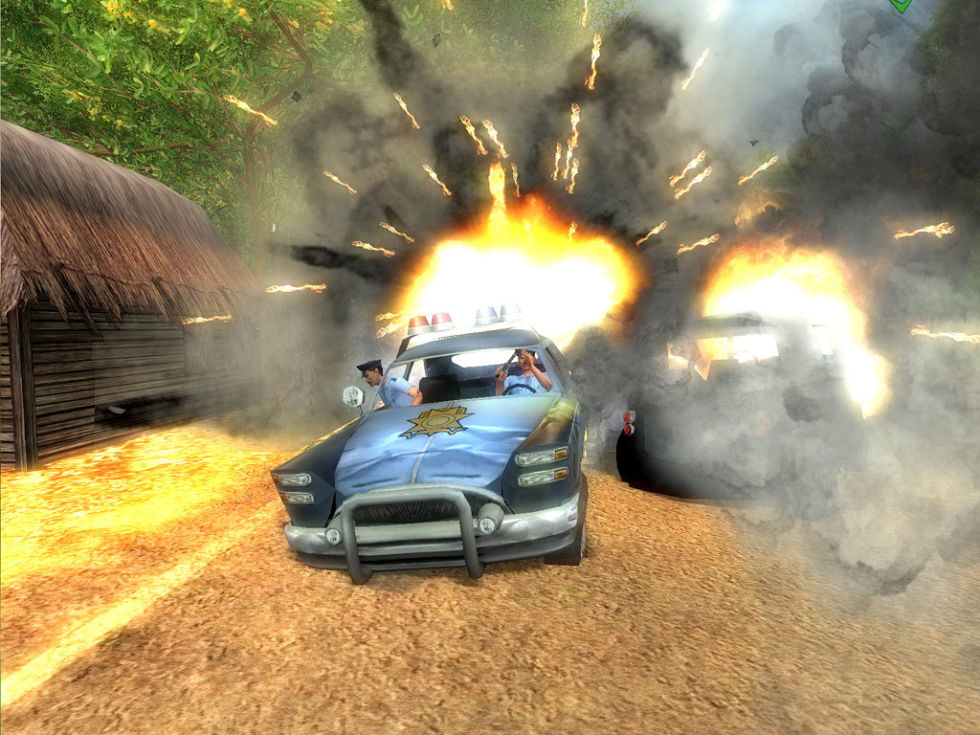
Just Cause 1
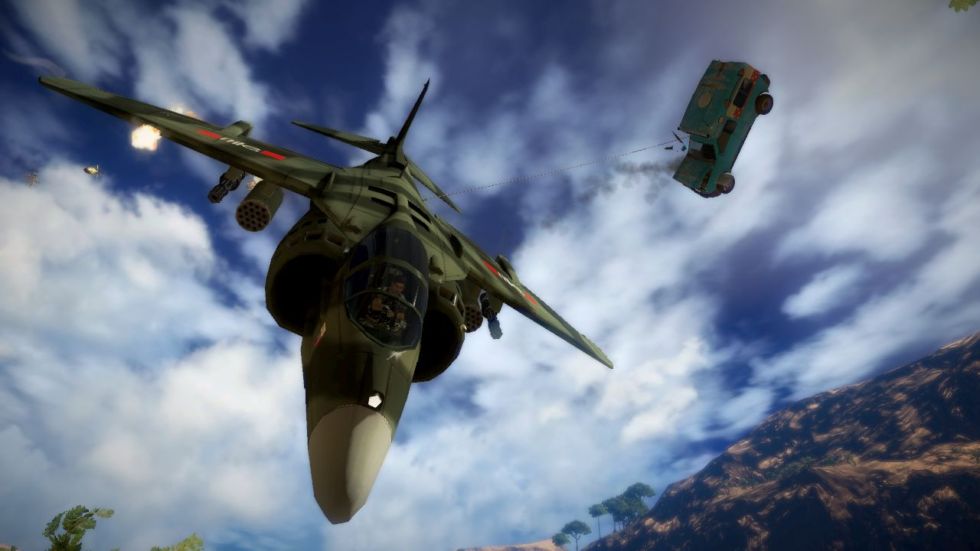
Just Cause 2
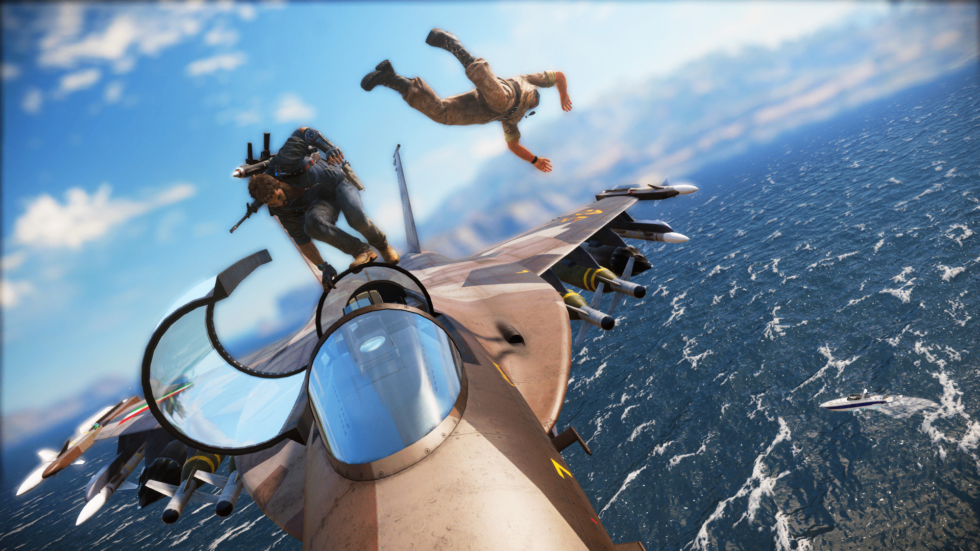
Just Cause 3
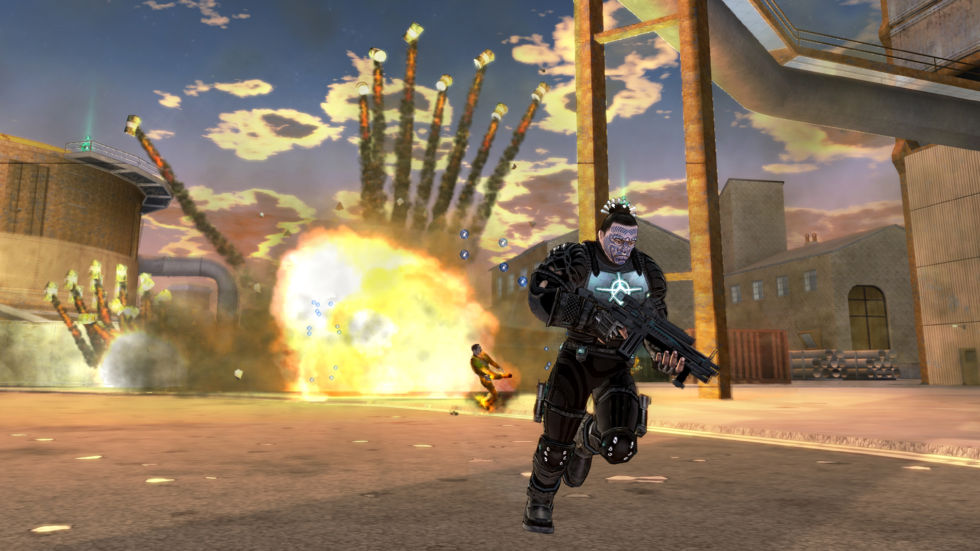
Crackdown
Dudes and daredevils
The increasingly serious plot of the open-world model Rockstar created the possibility of capturing a new niche - the game for the game. "Sandboxes" the size of a city or even a country filled with toys is not very plausible and without trying to create a deep plot, but simply as an excuse for creating chaos. The marketing departments and the leadership of the majority of industry participants seemed to be demanding to make games similar to GTA , but Saints Row , Crackdown and Just Cause went in a different direction: let's start with GTA , remove everything boring from it, and replace the most fun and surreal nonsense, which we can think of.
The first Saints Row (2006) was basically similar to the updated (Xbox 360 instead of PlayStation 2) version of San Andreas, with a vague and standard gang war story and some interesting additions such as the system of respect and the possibility of insurance fraud (for example, passing car). But in the sequel, the game developer Volition decided to put everything on the line. The first part of the game ended with the explosion of the yacht, on which the main character was located. Therefore, Saints Row 2 (2008) could continue the plot, at the same time giving players the opportunity to create their own character: the injuries of the main character required serious plastic surgery. So begins one of the funniest games (surpassed only by its continuations). It combines the best elements of B-class films with a variety of funny features, the best of which is an assenizatorsky truck called Septic Avenger.
Not only the Saints Row series at that time relied on humor. In Just Cause (2006), a player could climb or parachute to any type of transport - a car, motorcycle, boat, helicopter, passenger aircraft, etc. - and jump from one to another with great speed. Missions, especially additional ones, did not shine with originality, but it was possible to arrange chaos for hours and fly around the world like a superhero. It is good that in Just Cause 2 (2010) all this was brought to the limit. The whole point of the second part was to destroy objects and destroy the world to undermine the local dictator’s power and cruel regime. Moreover, in this open world, driving a vehicle was an optional addition. Why limit yourself to transport if you can hook a cat hook on anything, seize jet planes in the air, tie cars (and indeed everything and everyone) to a helicopter, and instantly jump from transport to transport.
Chaotic, joyful, destructive freedom Just Cause found its embodiment in Crackdown (2007), which looked like an alternative to the development of the GTA series. It’s like the Hauser brothers . Trans .: GTA developers] decided to double the amount of fun and discard stories about the clash of the individual and society in modern America. GTA was focused on recreating the real places and the cinematic level of the story. Crackdown has adopted the idea that a player can create much more interesting stories by himself if he is given enough “toys” and baits. Even at the very beginning of the game it was possible to overtake the cars, and people flew into the air from the blows of the player. After collecting enough skill points, the player could almost jump over buildings.
It was very interesting to just explore the world, crashing, throwing enemies and shooting them with rockets in the air. It was one of the first open worlds that encouraged the collection of objects and achievements. Collected items were not the discovery of this game, but they were interesting, and they had a goal: they made the character stronger. They gave long and high jumps, more powerful explosions, bounces and accurate aiming.
Even though this funny open-world design style found its niche, he found himself in the shadow of the phenomenal success of a game with a large budget that continued to flirt with the idea of a rich narrative about a character with a hard fate — a reformed (partially) mass murderer. Significantly increased computing power, graphics capabilities and Internet support in the new consoles (Xbox 360 and PlayStation 3, the so-called " seventh generation ") allowed the genre to find new interesting directions of development.
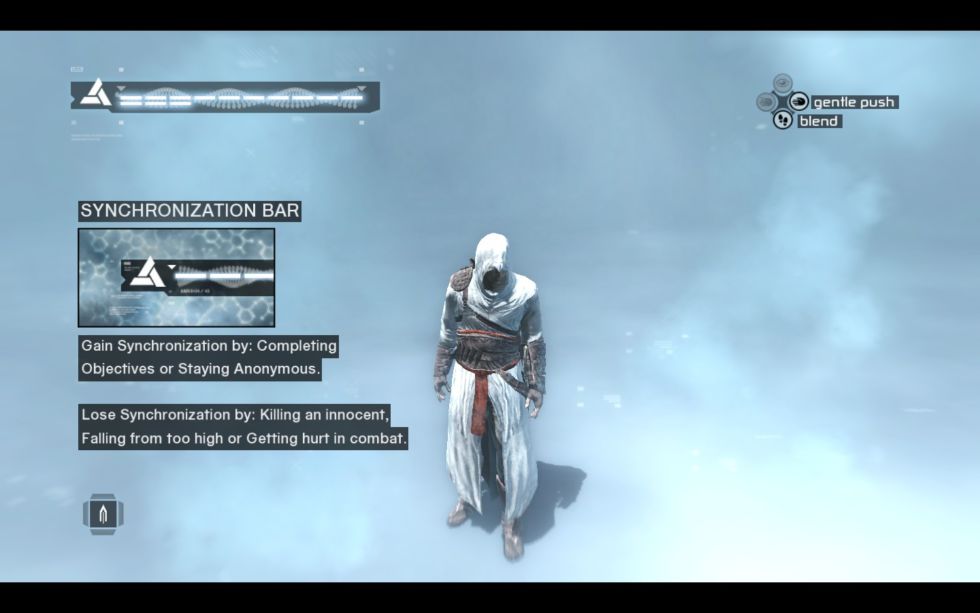
Assassin's Creed could sometimes seem monotonous, but at the core of the game was a unique combination of science fiction and historical plots.

This is Michael Fassbender, babes
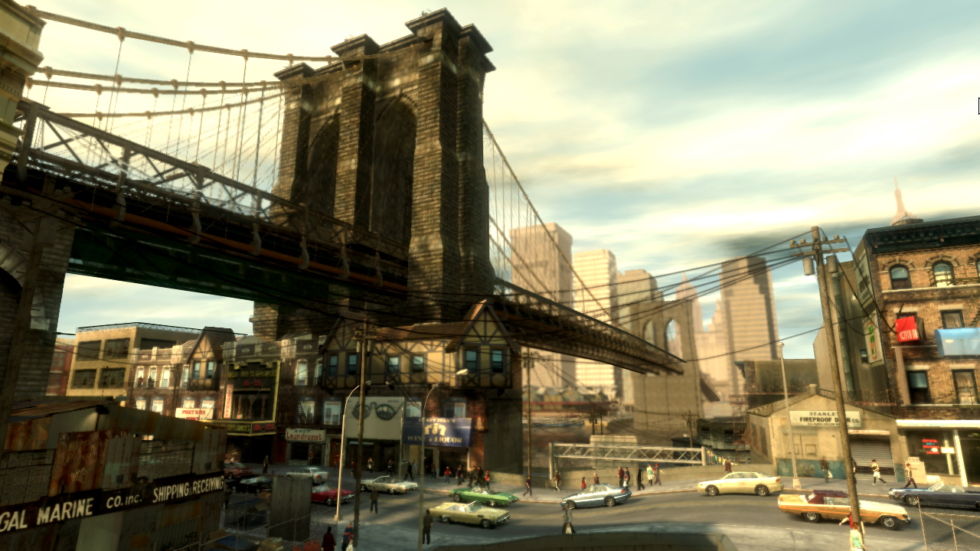
GTA IV

Red Dead Redemption
Through the city
Ubisoft 's Assassin's Creed (2007), more than any other game, has plunged the open world into history. In a bizarre story, which now seems to us quite simple compared to the confusing plot of sequels, the player controlled a bartender immersed in a 12th century simulation of Israel and Palestine with genetic memories of his ancestor - an assassin named Altair. Altair had to commit nine murders, using a combination of parking on the roofs, stealth, eavesdropping, pickpocketing and the inconspicuous elimination of enemies. But all this was almost secondary compared to the main task performed by Assassin's Creed : the creation of the world.
Unlike the worlds of the newer parts of the game, the open world of the first part did not give special opportunities, but it was so detailed, beautiful and alive that it hit even when the player just looked at it. The streets were full of life — street vendors, guards, thieves, and ordinary people argued and bargained, creating the rhythm and noise of a real city. Although the game focused on parkour to quickly move around the city, the walls and bricks were not marked as active objects.
Rockstar took a major step in 2008 with the release of Grand Theft Auto IV . This game has finally completely got rid of the cartoon character of the roots of the series. The game was often remembered for its faults, for example, for the constant calls of Roman's cousin or for the huge discrepancy between the behavior of the main character Niko in the plot inserts of his actions in the game. Nevertheless, GTA IV was a great achievement in the development of the plot in the open world. Liberty City was striking in its detailing, it looked like New York in an alternate reality, and the attitude of the immigrant Niko to the world was well emphasized by his desire to escape from the grim criminal past to the mythical American dream.
The game was a turning point for Rockstar and for the design of open worlds in general. The moment has come when freedom has ceased to be a goal. Rather, it turned into one of the features. I do not want to say that freedom has become less. In accordance with the traditions of GTA , it was possible to spend hours playing bowling, watching TV, dating, exploring and creating chaos.
Two years after GTA IV, Rockstar released the epic game in the style of the Wild West - Red Dead Redemption , an ambitious sequel to the open world of the third-person arcade shooter Red Dead Revolver (2004). It was a masterpiece of storytelling in the open world, whose genius consisted in the correct combination of player freedom and sensations from the film. Thanks to good lighting, sound and framing, the world seemed real. The protagonist John Marston was neither a “clean sheet” nor a source of dissonance - as in any great western, the player inevitably attached to the character and his fate. The exciting world has replaced GTA's trademark irony with gloom and anxiety. The world was changing around, and the player, like everyone else, could not stop him.
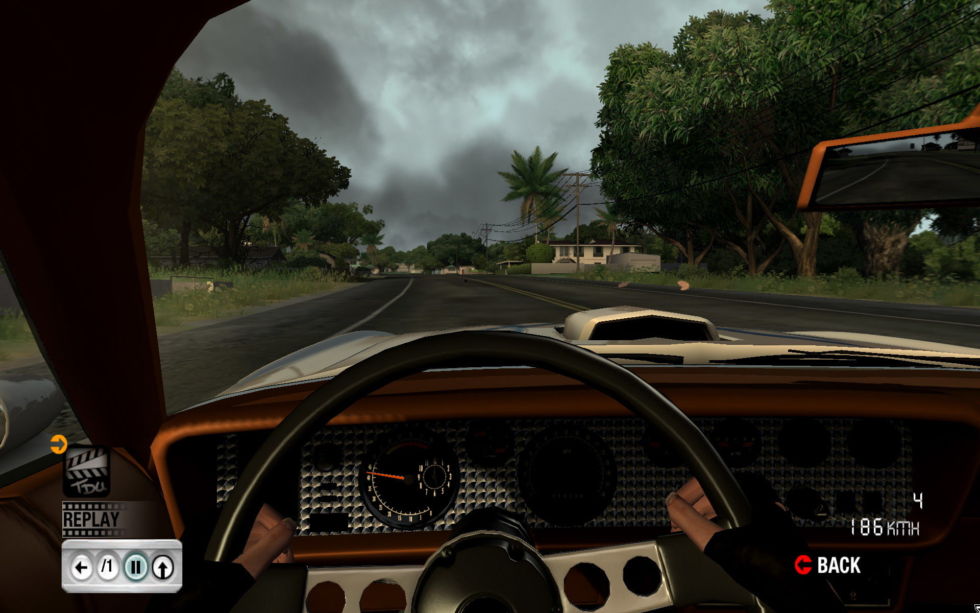
Test Drive Unlimited

Burnout paradise

Proteus
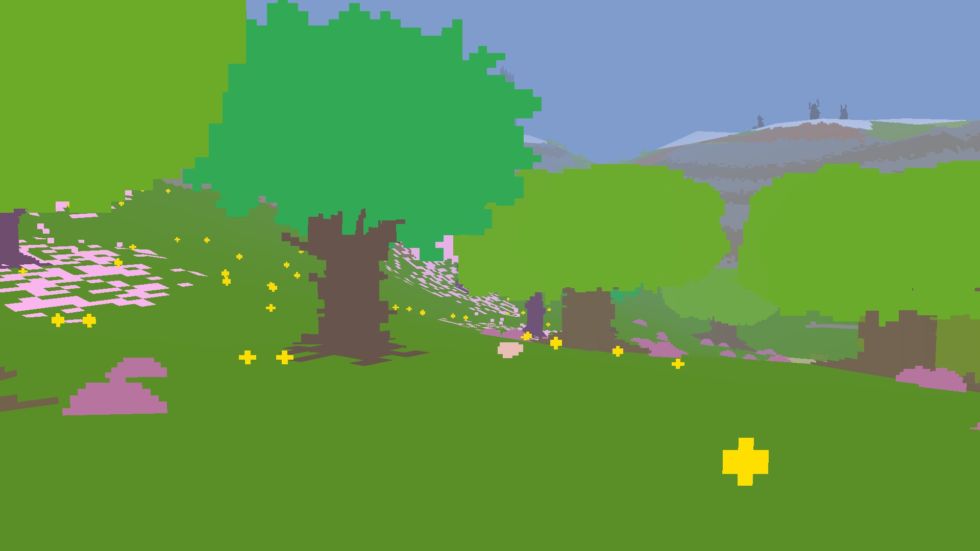
It does not look like the game was made in 2013, but it became an interesting stage in the development of the genre.
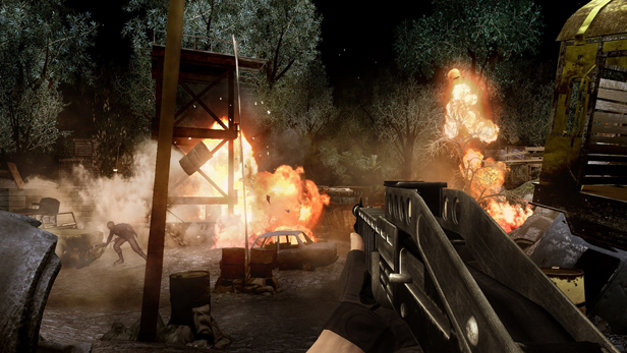
Far cry 2
Keeping faith
Meanwhile, the design of open-world games has been fixated on the same ideas. Super Mario Sunshine (2002) unsuccessfully tried to follow the path of the open world further than Mario 64 : its interesting world of Delfino Plaza was very rich, but, unfortunately, could not outweigh the problems of the rest of the game. In the study game Proteus (2013), which took place on a procedurally generated island, the only goal was to change the seasons.
Test Drive Unlimited (2006) provided the player with a thousand miles of Hawaii roads and allowed several to compete with each other or with AI if they got tired of exploring the world. In the game, you could buy motorcycles, cars and houses, take photo models home after shopping, repaint cars and move down from the top of the mountains at full speed. It was a bold attempt, which only a few games before it dared - to give the player interesting content and unlimited virtual driving opportunities. In other games, for example, in racing The Crew (2014) Ubisoft, the highly realistic Forza Horizon simulator (2012) of Microsoft and two more of its realistic and popular sequels (2014 and 2016), as well as in any part of Need for Speed with open world, the player was free to ride, receiving notifications about possible tasks , because just driving was not enough.
In Burnout Paradise (2008), developers approached driving in an open world in much the same way as Crackdown changed the GTA format. Paradise City is a place where you need to drive fast, shoot down billboards and crash as spectacularly as possible (in a majestic slow-motion shot). The game did not try to create the illusion of population - it was a ghost town, and only driving animated it. At each intersection, it was possible to find an interesting event (in which you were not forced to participate) - a race, a time trial, stunt stunts, an escape or a violent collision, and in any town quarter there were objects suitable as ramps. This game believed that realism was for the weak. It was much more fun to drive on the oncoming lane of the highway with a full scale of nitrous oxide and go to a ram with every car found, and then at the last moment turn off to the edge of the road to knock down a billboard and randomly rotate, flying down to its fate.
STALKER: Shadow of Chernobyl (2007) was a rare case of a first-person shooter in the open world. The game had a stern style, unusual for both genres. The neighborhoods that were contaminated with radiation were full of life: mutated animals, dry vegetation, dangerous and wild bandits, radioactive swamps, destroyed buildings and fearful openness. Here, outside the standard framework, unlimitedness concerned not only the freedom and size of the map: it was associated with fear and the desire to survive. In this open world you were not omnipotent. Most of the time you were not even safe. And this indifference in combination with a meditative and dangerous environment gave incredible sensations.
Far Cry 2 (2009) took the idea of a mercenary from GTA as the main character and transferred it to the 50 square kilometers of the African jungle and savannah, filled with old weapons and crumbling transport. Parties to the conflict fought with each other, the player could cooperate with them or betray them. And, best of all, it was possible to make fires, scare animals and create chaos around them.
Driver: San Francisco (2011) got rid of the elements of the foot movement of his predecessors thanks to a clever plot: the main character Tanner is in a coma, so he is not limited in movement by his physical embodiment. This game allowed to change cars with one click, without any cheat codes or mods.The split-screen multiplayer mode was similar to a toy car race in the children's room, and the plot often resembled poorly related episodes from the “New York, I Love You” series of short films , only on wheels.
Euro Truck Simulator 2 (2012), the fourth part of the SCS Software Truck Simulator series , has proven the vitality of an everyday open world without violence. In this open-world game, developers have retained only the core of the genre — free movement. It was a catharsis game (and it remains the same, in 2016 a sequel to American Truck Simulator was released), there are no weapons, battles, difficult missions, melodramatic scenes and boss fights. There is only a player, radio and road. Hurry is not necessary, your task is to take the load from point A to point B within a reasonable period of time. Again and again, every time from different points A to different points B, to different distances with options for trucks and cargo. There are no opponents, you can relax and watch the beauties of the surprisingly detailed real-world routes. The pleasure could be strengthened by accumulating on your own truck and completing the tasks of your choice. (By the way, many players with special pleasure drove along the roads and through cities that they knew in real life.)
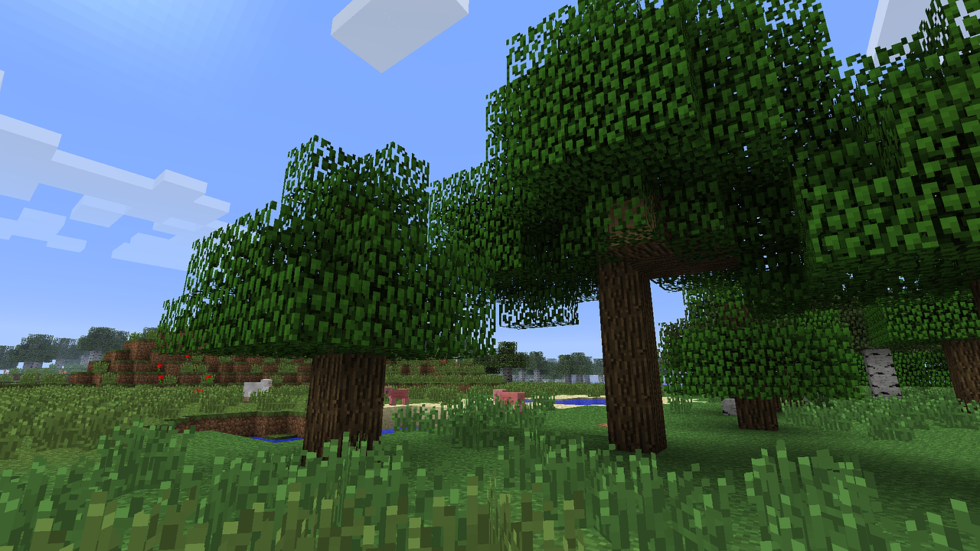
, ,
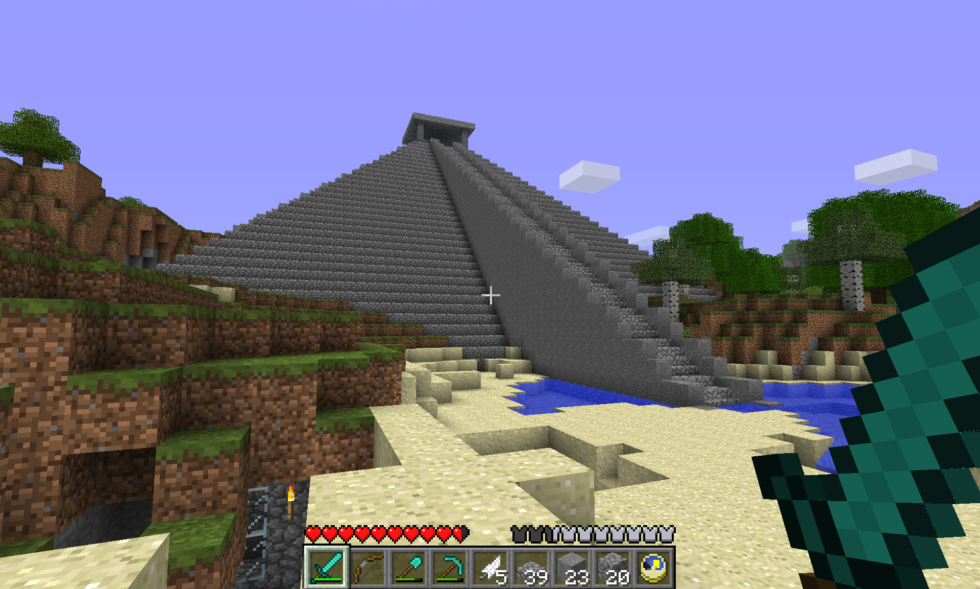
Minecraft
All these games were defeated not by the new part of GTA , but by the cubic sandbox, which was originally developed (in Java, by the way, which hardly provides high performance in games) by one Swedish programmer who sold copies of the game in the process of creation. He allowed people to play early alpha and beta versions — a sort of “early access” release program, even before this term appeared.
Minecraft (the first public release - 2009, the official release of the full version - 2011) felt like a return to the open world design past - the game remained absolutely unlimited. There were no storylines or missions in it, but there were many interesting activities. It was a step forward from Mercenary and Elite.. The crafting system made the world fresh. The player could create his environment, digging up blocks and placing them anywhere, could create weapons, tools and other materials, build intricate or simple designs. The game was sold - and is still being sold - to over 100 million copies on different platforms (PCs, consoles, mobile devices). In it you can build a house for yourself (modest or majestic), or wander endlessly in search of the end of the world.
In procedurally generated worlds of games over the horizon or deep under your feet, anything could wait for you, and you could create everything you dream of, you just need to be patient (and in survival mode, you also need common sense not to die from a zombie attack, spider or other monster). Moreover, if you want to share your world with other people (and not just with AI-driven peasants), you can create a multiplayer server or connect to someone else's. Depending on the conditions of the server, a player may fight, communicate, collaborate, annoy, compete, or troll other people.

If you're a fan of Elite: Dangerous , you probably learned Cobra. We are
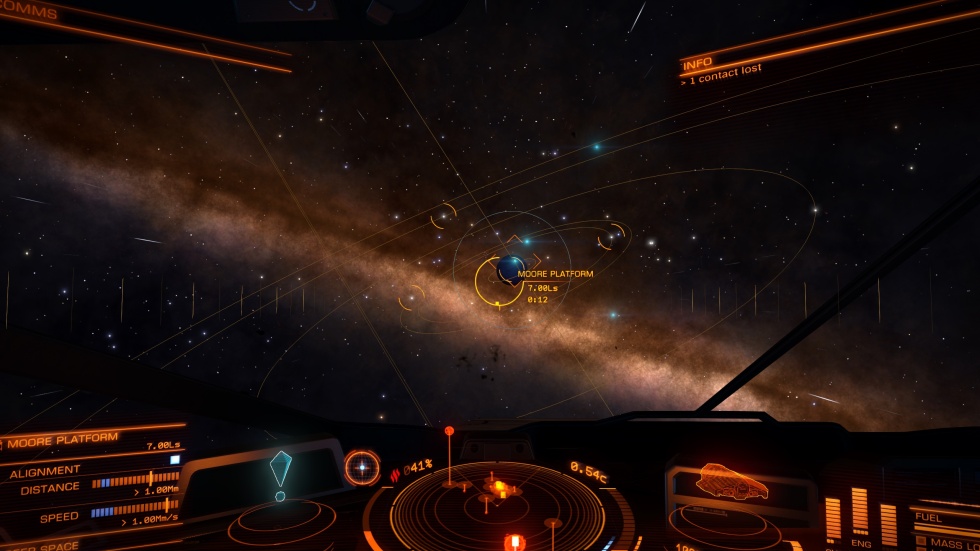
approaching a platform in orbit of a gas giant.

Watch Dogs 2 , , . , , .
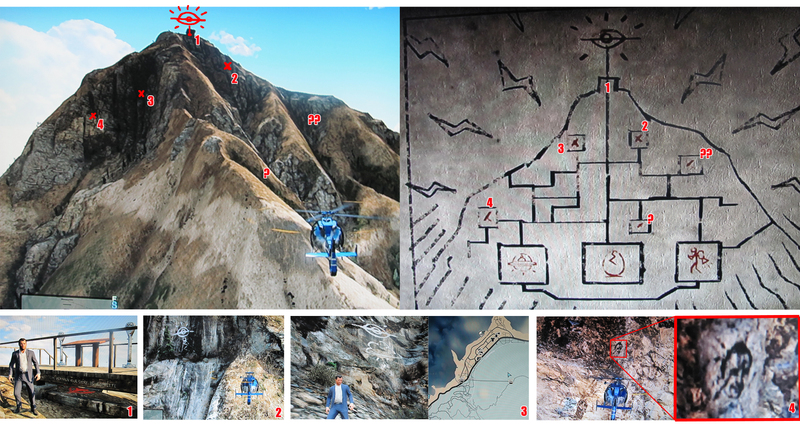
- GTA V ?
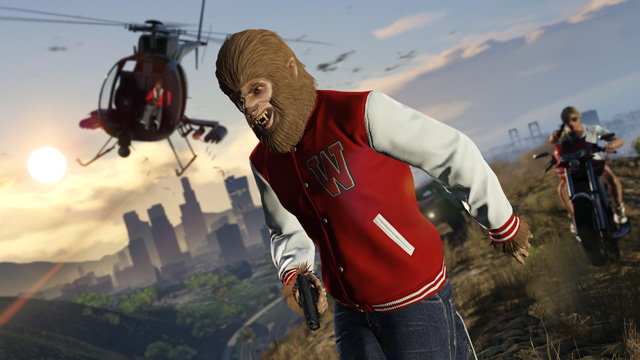
GTA V , — -, «»
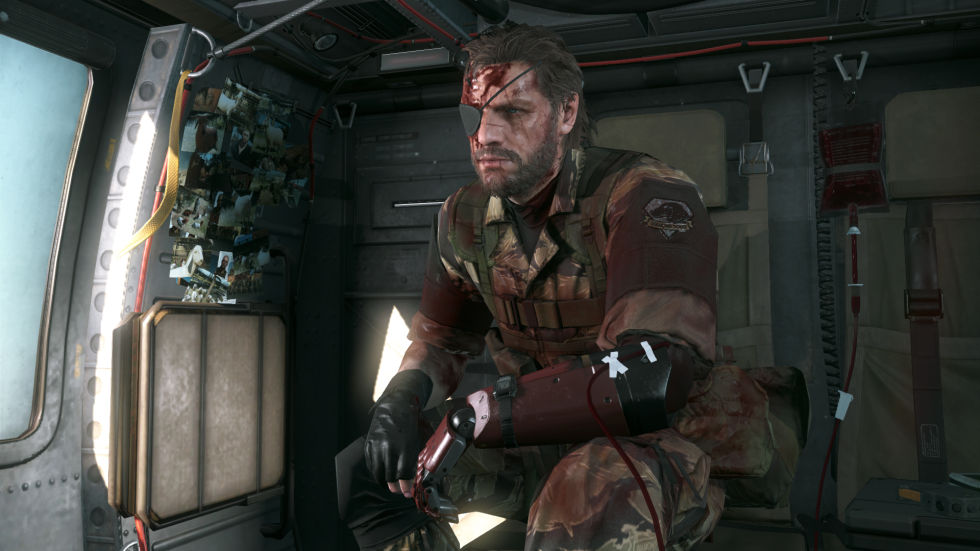
Metal Gear Solid 5
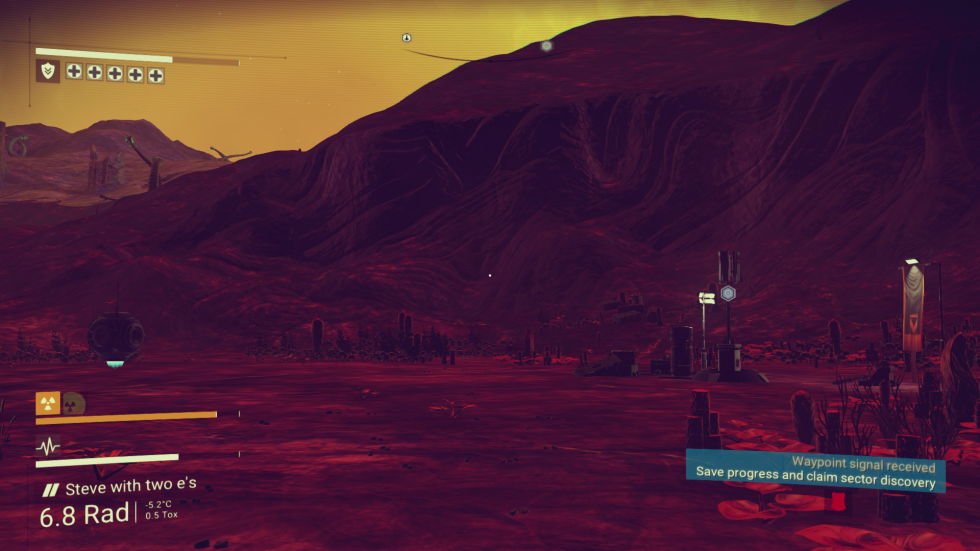
No Man's Sky ,
, , ?
Good or bad, but most commercial games now have an open world. This becomes the standard option. However, there are still obstacles hindering the fulfillment of old promises: the game should give you an interesting, dynamic world and allow you to have fun in your own way, and not make you pursue goals on a mini-map. Elite Dangerous (2014), restarting the Elite series, created under the direction of the author of the original game, gives the player a galaxy of 400 billion star systems, some of which are based on real astronomical data, and allows him to pave his own way. As in the original game, the player can be anyone, in addition, the galaxy is now one for all players. Developers are gradually expanding the possibility of releasing patches. They added clans, landings on planets (in procedurally created worlds) and crafting, as well as some other important features.
Sensational and Criticized No Man's Sky(2016) will also provide long-term support for players, trying to reassure them after the failure of promises of a procedurally generated universe in which players had to move between planets inhabited by incredible procedural creatures, some of which resemble dinosaurs. Monotonous gameplay with an enhanced grind in an almost infinite number of uninteresting (albeit beautiful) worlds was poorly received by the community.
The idea of free exploration by a lone traveler of many dangerous alien worlds is much better embodied in the game Astroneer.from Steam, which is in the early access phase. It connects basic human needs (in particular, the need for oxygen) with research, mining, terraforming, crafting and collecting fragments of space ships and old colonies.
Let's end with space games: in Metal Gear Solid 5: The Phantom Pain (2015), we managed to build into the mission structure the very element that conflicts with the narrative in open worlds: freedom. Missions reward creativity and do not punish deviations from stealth - as in arbitrary scenarios, you can play as you like, creating your own memorable and unique stories.
At the same time, the Ubisoft model, as is evident from Assassin's Creed Syndicate (2015),Far Cry Primal (2016) and Watch Dogs 2 (2016), are now less focused on research and more devoted to looking at the mini-map in search of a new marker that indicates a mission or item being collected. In this model, there was too much information noise and fuss. In GTA V (2013), with the exception of well-hidden Easter eggs , the situation is not too different - missions and event markers are scattered throughout the map, and all three game characters receive a bunch of calls and messages. And without a doubt, these games will copy, because such is big business. After Christmas, GTA V exceeded 75 million sales and became the fourth in the list of best-selling games. Assassin's creedIt has become a bottomless treasure trove of games, comics, short stories, short films, and now also an expensive (albeit bad) feature film .
With the increasing popularity of an open world filled with bustle, missions and events, it is increasingly important that games like Crackdown , Elite Dangerous, and Just Cause remind us of the promise open worlds gave us: we can be free, do what when we want, in any way interesting to us. We can play in our virtual worlds, using imagination and endless possibilities, as children in the real world do.
Source: https://habr.com/ru/post/373299/
All Articles